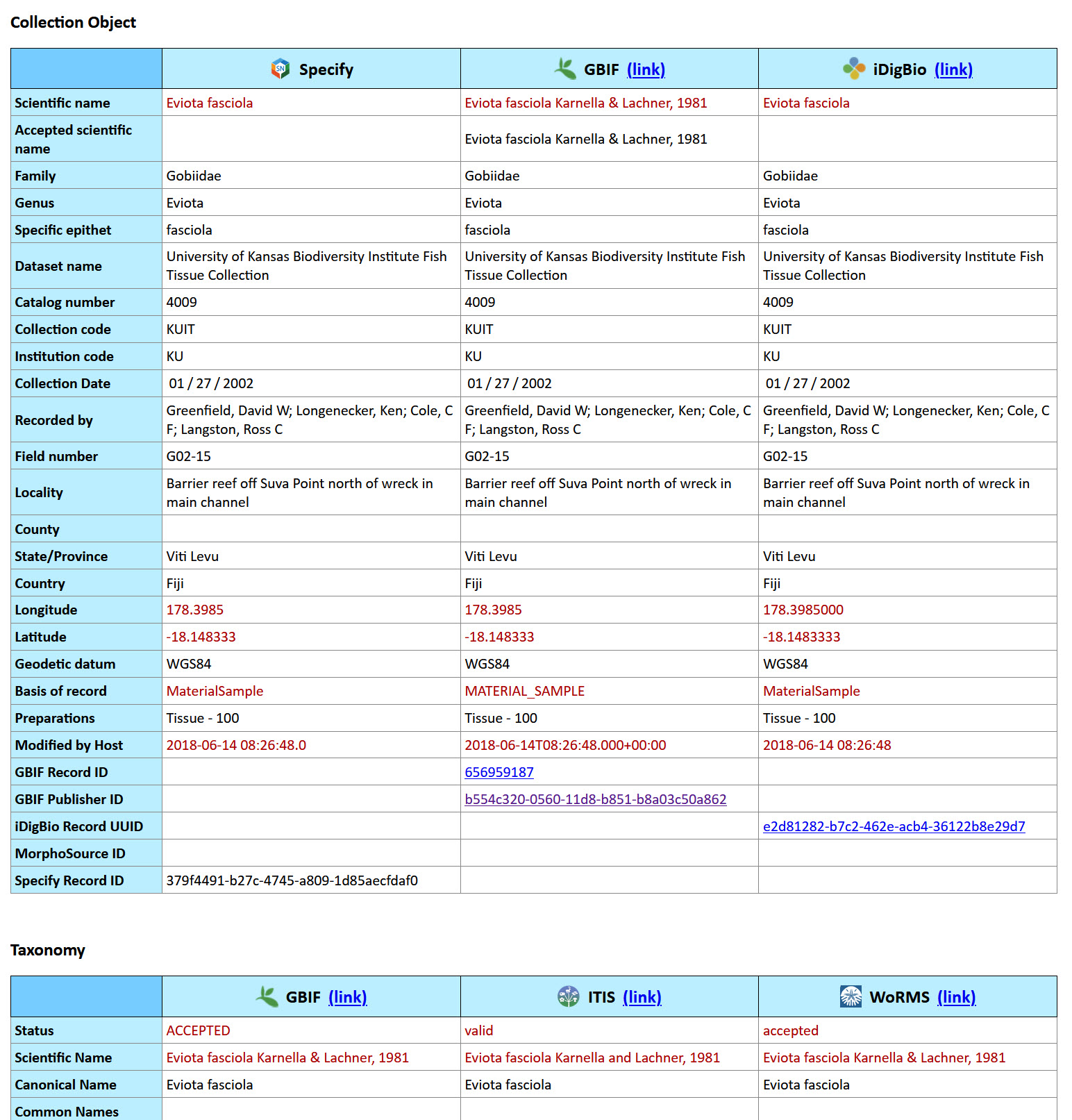
The Biological Collections Community is developing a vision for a global, biodiversity information architecture that will enable powerful new methods for digital interactions among organizations that manage specimen data. A world-wide specimen data architecture based on digital object concepts, permanent identifiers, and APIs will transform biological collections computing by supporting network-enabled research and curatorial workflows. Museums will benefit greatly from network services that provide immediate access to downstream information derived from objects in their collections.
The Specify Network, introduced here, takes a step toward that future. Technologically, it includes: a network services Broker, an ID Resolver, and the Specify Cache. We developed these forward-looking technologies in collaboration with the Biotaphy Project (https://biotaphy.github.io/, NSF #1930005). Together the components enable network integrations based on Specify 6’s Collection Object GUIDs and Taxon names. The Specify Network can be invoked while viewing a Collection Object record by using the large button in the upper right corner of the form. Clicking the button will send the specimen record GUID to the Specify Network for executing queries on remote services (currently including: GBIF, iDigBio, Lifemapper, MorphoSource, and WoRMS). The Network will then create a summary web page of any available information returned with the query results. Unlike weblinks where the path to information related to your collection objects requires a static URL, the Specify Network performs discovery and linking functions “on-the-fly” through dynamic, network interactions.
Here is a sample of a Specify Network generated report that shows the data from a Collection Object record in a Specify 6 database, and compares them to the information held by Internet aggregators and to taxonomic information managed by name authorities. Click on the image to regenerate the report.
The Specify Cache contains copies of Specify 6 database records exported in the Darwin Core standard. Specify 6 will export a subset of your collection’s occurrence data to the Specify Cache that runs on a private SCC server. A new Preferences menu option enables a Collection to opt-in to using the Specify Cache. The Cache has no web interface; its data are viewable in Specify only through APIs with the Collection Object GUIDs from your collection. Currently, the main function of the Specify Cache is to enable comparisons of Collection Object data fields in your Specify 6 database with records held by aggregators and name authorities. In a future release the Specify Cache, Broker, and Resolver will enable statistical analysis to quantitatively describe your collection in new, research-relevant ways. Although the Specify Network will not immediately reconcile multiple versions of specimen records and related distributed update issues, it will provide a technical path to take on data integration challenges such as moving occurrence records between collection management systems.
The Specify Network is a core element of the SCC’s technology vision. Specify institutions will benefit directly from its information and computational service integrations. Growing and extending it will help SCC institutions envision and engineer network-enabled workflows, and will reinforce the role of museums as primary sources of vouchered species information in a future global, biodiversity data architecture.
